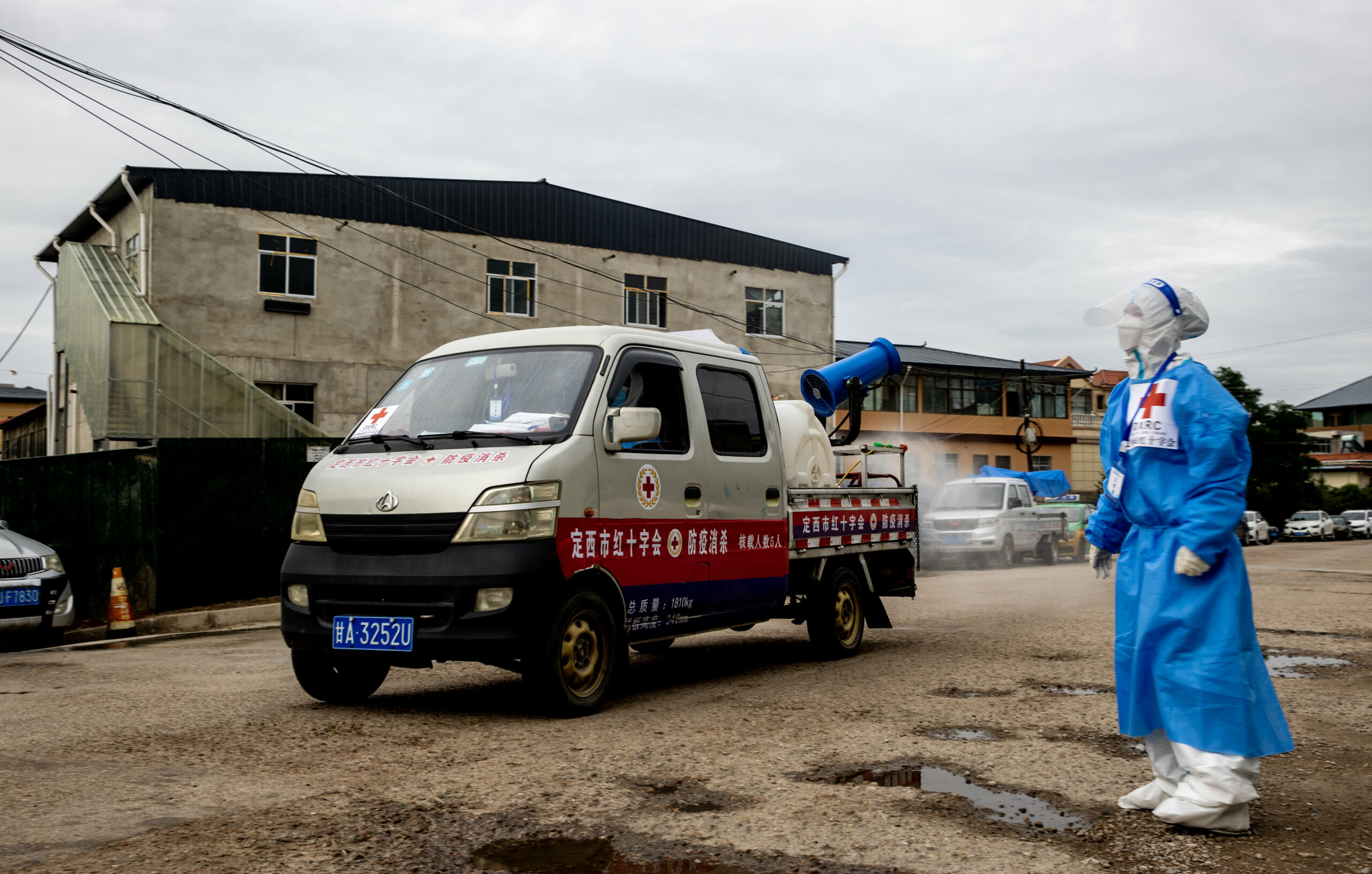A new descendant of the Omicron variant of Covid-19 – XBB1.5 – is spreading at full speed in some areas of the United States. With a high capacity for contagion, it already accounts for a high percentage of cases in a country where infections are on the rise, fueled by a season of travel and internal gatherings.
According to data from the Centers for Disease Control and Prevention (CDC), the XBB and XBB1.5 subvariants accounted for 44.1% of all Covid cases in the United States during the week of December 31. A week earlier, that proportion was much lower, at 25.9%. And, in the week of December 15, it was just over 10%.
Maria Van Kerkhove – epidemiologist and technical manager of the response against Covid at the World Health Organization (WHO) – expressed her concern from Geneva. “[They are] the most transmissible subvariants that have been detected so far,” he said.
While there is no indication that the subvariants are more deadly or cause more serious infections, the speed with which they are spreading worries scientists. “The more this virus circulates, the more opportunities it has to mutate.”
Concerns have been compounded by the fact that China – the world’s most populous country, already in the grip of a new wave of Covid – is preparing to open its borders this weekend for the first time in almost three years. The WHO and several governments have criticized Beijing for its lack of transparency regarding infection data. Meanwhile, XBB1.5 – a mutation that has the ability to attach itself to human cells more easily – has already been detected in 29 countries.
In the United States, the combination of the new subvariant and the holiday season – which began at the end of November with Thanksgiving – led to an increase in the number of Covid cases and hospitalizations. The average number of daily cases recorded between December 29 and January 3 is 6,519; the previous week, the total was 5,613.
The new mutation was first discovered in October, in New York and Connecticut. Currently, according to CDC data, XBB and XBB1.5 infections already account for 75% of cases in the New York area, while they account for 86.2% of cases overall in New England.
So far, there is no data to suggest that infections from this subvariant are more serious, although they are more contagious. Experts also stressed that existing Covid vaccines and treatments appear to be effective against the subvariants. Since the population now has a much higher level of immunity against Covid, the situation is not expected to reach the peak of the pandemic levels of the last three years.
In New York City – one of the focus points of the new subvariants – hospitalizations have increased. According to the city’s Health Department, the current rate is 22.26 per 100,000 residents, the highest level since February 2022. But it is difficult to attribute the increase to XBB1.5, since respiratory diseases tend to proliferate in winter. Most of those admitted to the hospital with Covid in the whole state of New York – 54.8% – were not hospitalized because of the subvariants. The symptoms were weak enough that the disease could only be detected through tests.
“We expect new waves of infection around the world, but this should not translate into new waves of death, because our measures against the virus continue to work,” Van Kerkhove stressed in his press conference.
A WHO technical group has been established to study the evolution of the virus and assess the risk that the new subvariants represent. The group closely monitors all possible changes regarding the severity of XBB and XBB1.5, using laboratory studies and data obtained among different populations. According to Van Kerkhove, a report should be published in the coming days.
The CDC has reiterated its calls to the general public to go get booster doses. Although 70% of Americans are vaccinated with two doses, only 15.4% of those over the age of five have received booster shots. Only among those over 65 – the population at greatest risk of Covid – is the rate of Covid booster higher, at 38.1%.
The US government aspires to make Covid vaccines an annual campaign, as is done with flu vaccines. US President Joe Biden discussed this in October of last year: “For most Americans, one dose against Covid a year will be all they need. And if they get it, they will be protected. And if you don’t [develop it], you’re putting yourself and others at unnecessary risk.”
For now, Washington has renewed the requirement that foreign visitors to the United States present vaccination certificates. The Biden administration also requires that travelers coming from China present negative Covid tests, carried out no more than 48 hours before the time of departure.
Subscribe to our weekly newsletter for more English-language news coverage from EL PAÍS USA Edition
Also, although variants with a higher number of mutations are not potentially more dangerous, the Omicron variant with 32 of 50 mutations located on the spike protein is more likely to affect how easily it infects a human cell. Comparison structure of SARS-CoV-2 and Delta variant.
Why is the coronavirus variant more contagious?
As the coronavirus flourishes, evolutionary pressure selects variants that can complete the infection cycle more quickly and reproduce in large numbers compared to others. This increase in infectivity and transmissibility coupled with the immune response from high viral load can cause moderate to severe disease.
What is the most common covid variant? The Omicron spreads more easily than previous variants, including the Delta variant. Anyone with Omicron infection, regardless of vaccination status or whether or not they have symptoms, can spread the virus to others. This may interest you : Department of Health Energizes Vision for Health in Washington | Washington State Department of Health and Human Services. Data suggest that Omicron can cause reinfection, even in people who have recovered from COVID-19.
Is the new strain of Covid more contagious?
According to the CDC COVID tracker, BA.5 is the predominant strain of COVID-19. It spreads more easily than other strains because it evades immunity from infection and past vaccination from COVID-19.
Is the Delta variant more contagious than the original?
Delta is more contagious than other strains of the virus. On the same subject : To Continually Improve Health Equality for New Yorkers Living With and At Risk Of Hiv, State Department Of Health Announces New Solicitation Request (RFA). (Naming conventions for variants have been established by the World Health Organization [WHO] as an alternative to numerical names).
Is delta more contagious than Omicron?
How transmissible is the Omicron variant? The omicron subvariant of COVID-19, BA.5, has become one of the dominant strains of the virus in the United States. On the same subject : The Malice in Dallas. It is the most easily spread strain to date and is able to evade immunity from infection and the COVID vaccination.
How does Omicron differ from Delta?
Analysis of self-reported results confirms that, compared to the SARS-CoV-2 Delta variant, Omicron causes a different constellation of symptoms as well as a shorter and milder illness.
Is Omicron more virulent than Delta?
And even if omicron is less virulent than delta,3 its immediate ancestor is not delta but a virus from earlier in the pandemic.
Is Delta or Omicron more contagious?
Transmissibility. And while the Omicron variant may be a bit lighter, it also spreads more easily than previous variants, including the Delta variant. Researchers suspected this before, based on the high number of Omicron mutations (there are about 50 in total; 36 in the spike protein of the virus alone).
Can I protect myself from Omicron?
Wear a mask. Regardless of which variants are circulating, wearing a mask around other people is still one of the best ways to slow the spread of the virus. This is true whether you have been vaccinated, boosted or not.
How long after exposure does the omicron infect? We know that people tend to be more infectious earlier in the course of their infection. With Omicron, most of the transmission occurs during the day to two days before the onset of symptoms, and in the two to three days after.
How do you stop the spread of Covid in omicron?
What can I do to protect myself and others from COVID-19?
- Wear a face mask in public indoor areas.
- Keep at least six feet of distance between you and others.
- Avoid large gatherings.
- Socialize outside.
- Get vaccinated and boosted as soon as you are eligible.
- Avoid close contact with people who are sick.
Can you spread omicron without having it?
The Omicron spreads more easily than previous variants, including the Delta variant. Anyone with Omicron infection, regardless of vaccination status or whether or not they have symptoms, can spread the virus to others.
Why is the BA 5 so contagious?
Compared with the BA. 2 subvariant, BA. 5 was able to spread more easily due to its ability to evade immune protection against infection induced by previous infection or vaccination. This is especially so if the protection has decreased over time, contributing to more frequent infections and reinfections.
Why is BA.5 more contagious? According to the CDC COVID tracker, BA.5 is the predominant strain of COVID-19. It spreads more easily than other strains because it evades immunity from infection and past vaccination from COVID-19. This means even if you are infected with delta or omicron BA.1, you can still get BA.5.
Is ba2 variant more severe than Omicron?
2 subvariant (the strain that makes a re-emergence this fall), a team led by researchers at Massachusetts General Hospital (MGH) determined that the BA. 2 subvariant is less severe than the previous Delta variant and less severe to an even greater extent than the original Omicron variant.
Is Omicron ba2 less severe?
A study suggests that variants of COVID-19 may be weaker with Omicron BA. 2 giving rise to less severe infections than other variants. Omicron BA. 2 (OBA2) seems to result in less severe infections, and it is possible that COVID-19 will evolve to become weaker according to the results of American researchers.
What is the incubation period for BA.5 Covid?
The median incubation period was 2.8 days (95% CI: 2.5–3.1) and there were no differences between vaccinated and unvaccinated patients. Gender and age have not been shown to be significantly related to the incubation time of COVID-19.



